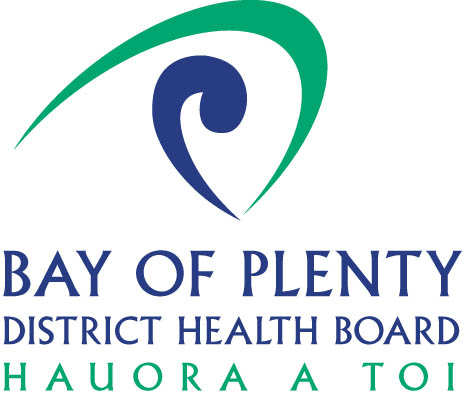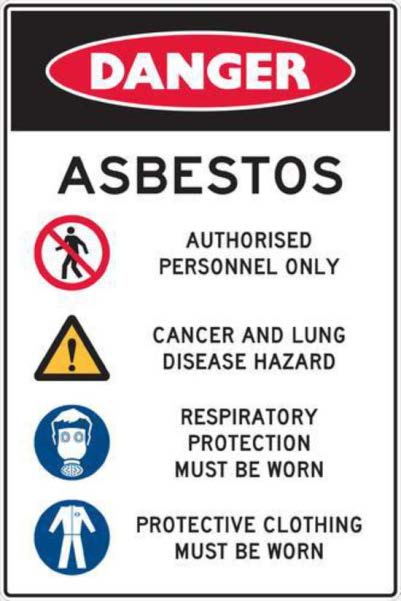
Facilities and Business Operations
Asbestos Management Plan
Bay of Plenty District Health Board Facilities,
Tauranga & Whakatane Hospitals
July 2019
Version 1.1
link to page 4 link to page 6 link to page 7 link to page 7 link to page 8 link to page 8 link to page 9 link to page 13 link to page 13 link to page 13 link to page 14 link to page 14 link to page 14 link to page 14 link to page 14 link to page 15 link to page 15 link to page 15 link to page 15 link to page 15 link to page 16 link to page 16 link to page 16 link to page 17 link to page 17 link to page 17 link to page 18 link to page 22 link to page 22 link to page 22 link to page 22 link to page 22 link to page 23 link to page 24 link to page 25 link to page 25 link to page 25 link to page 25

ASBESTOS MANAGEMENT PLAN
CONTENTS
1. BOPDHB Asbestos Health & Safety Policy ....................................................................................... 4
2. Introduction .......................................................................................................................................... 6
3. Scope .................................................................................................................................................... 7
3.1
Plan Review ................................................................................................................................ 7
4. Asbestos Surveys ................................................................................................................................ 8
4.1
Samples for assessment ............................................................................................................ 8
5. Definitions............................................................................................................................................. 9
6. Roles & Responsibilities ................................................................................................................... 13
6.1
Executive Management Team .................................................................................................. 13
6.2
Hazardous Substances Manager (HSM) .................................................................................. 13
6.3
FM Managers ............................................................................................................................ 14
6.4
Workers and Contractors .......................................................................................................... 14
6.5
Visitors ...................................................................................................................................... 14
6.6
FBO H&S Advisor ..................................................................................................................... 14
6.7
Major Projects ........................................................................................................................... 15
6.7.1 Planning Phase ......................................................................................................................... 15
6.7.2 Roles and Responsibilities ....................................................................................................... 15
7. Process ............................................................................................................................................... 15
7.1
Risk Overview ........................................................................................................................... 15
7.2
Process for Managing Asbestos in Soil .................................................................................... 15
7.3
Asbestos Registers ................................................................................................................... 16
7.3.1 Alpha Tracker ........................................................................................................................... 16
7.4
Changes and Maintenance to the Register .............................................................................. 16
7.5
Asbestos Register Reviews ...................................................................................................... 17
7.6
Communication & Consultation ................................................................................................ 17
8. Management Options & Controls for ACM ...................................................................................... 18
8.1
Asbestos Management Options ............................................................................................... 18
8.2
Sampling Process to Identify Asbestos .................................................................................... 22
8.2.1 Contractors ............................................................................................................................... 22
8.2.2 Internal Staff ............................................................................................................................. 22
8.3
Management of In Situ Asbestos .............................................................................................. 22
8.3.1 Re-survey and Inspections ....................................................................................................... 22
8.3.2 Labelling ................................................................................................................................... 23
8.4
Removal of ACM ....................................................................................................................... 24
8.4.1 Overview of the work requirements for removal ....................................................................... 25
8.4.2 Encapsulation or Sealing .......................................................................................................... 25
8.4.3 Enclosure .................................................................................................................................. 25
8.4.4 Leave In Situ - manage in place ............................................................................................... 25
Issue Date: July 2019
Page 2 of 39
NOTE: The electronic version of this
Review Date: July 2020
Version No: 1
document is the most current. Any
Protocol Steward: Hazardous Substances Manager
Authorised by: General Manager Facilities and
printed copy cannot be assumed to be
Business Operations
the current version.
link to page 26 link to page 26 link to page 26 link to page 26 link to page 27 link to page 28 link to page 28 link to page 28 link to page 28 link to page 29 link to page 29 link to page 30 link to page 31 link to page 31 link to page 32 link to page 32 link to page 33 link to page 33 link to page 33 link to page 34 link to page 34 link to page 34 link to page 34 link to page 34 link to page 34 link to page 35 link to page 37 link to page 37 link to page 37 link to page 37 link to page 38 link to page 38 link to page 38 link to page 39 link to page 39 link to page 39 link to page 39 link to page 39 link to page 39 link to page 39

ASBESTOS MANAGEMENT PLAN
8.4.5 Asbestos Removal Control Plans (ARCP) ............................................................................... 26
8.4.6 Work Approval .......................................................................................................................... 26
8.4.7 Clearance Inspections (Removal of asbestos) ......................................................................... 26
8.5
Work involving Asbestos Containing Material (Asbestos Related Works) ............................... 27
8.5.1 Procedures for entering Asbestos Contaminated Areas .......................................................... 27
8.6
Job Safety Analysis (JSA) ........................................................................................................ 28
8.7
Damaged ACM ......................................................................................................................... 28
8.8
Air Monitoring ............................................................................................................................ 28
8.8.1 Types of Air Monitoring ............................................................................................................. 28
8.8.2 Provision of Air Monitoring ........................................................................................................ 29
8.8.3 Process and results of the air monitoring (reassurance samples only) .................................... 29
8.9
Health Monitoring ...................................................................................................................... 30
8.10 Emergency Procedures during Asbestos Removal .................................................................. 31
8.10.1 Emergency Procedures Occuring during Normal Day Activities .............................................. 31
8.10.2 Evacuation Event ...................................................................................................................... 32
8.11 Incident Management and Reporting ....................................................................................... 32
8.11.1 Communication during an Asbestos Incident ........................................................................... 33
9. Training ............................................................................................................................................... 33
9.1
Induction ................................................................................................................................... 33
9.2
Work with Asbestos .................................................................................................................. 34
9.3
Contractors ............................................................................................................................... 34
9.4
Records .................................................................................................................................... 34
10. Communication Plan ......................................................................................................................... 34
10.1 Target Audience ....................................................................................................................... 34
10.2 Key Messages .......................................................................................................................... 34
10.3 Measures/evaluation of the plan ............................................................................................... 35
11. Reviewing and Updating the Asbestos Management Plan ............................................................ 37
11.1 Reviews .................................................................................................................................... 37
11.2 Updates & Changes.................................................................................................................. 37
12. Records ............................................................................................................................................... 37
13. References .......................................................................................................................................... 38
13.1 Legislation ................................................................................................................................. 38
14. Appendices ......................................................................................................................................... 39
14.1 Appendix A Asbestos Sampling Process ................................................................................. 39
14.2 Appendix B Change to Asbestos Containing Material Condition ............................................. 39
14.3 Appendix C Emergency Procedure .......................................................................................... 39
14.4 Appendix D Incident / Accident Notification Form .................................................................... 39
14.5 Appendix E Inspections in Asbestos contaminated areas........................................................ 39
14.6 Appendix F Perform Asbestos Related Works ......................................................................... 39
14.7 Appendix G HEPA (H Class) Vacuum Cleaner - Instructions for use ...................................... 39
Issue Date: July 2019
Page 3 of 39
NOTE: The electronic version of this
Review Date: July 2020
Version No: 1
document is the most current. Any
Protocol Steward: Hazardous Substances Manager
Authorised by: General Manager Facilities and
printed copy cannot be assumed to be
Business Operations
the current version.

ASBESTOS MANAGEMENT PLAN
1. BOPDHB Asbestos Health & Safety Policy
PURPOSE
The purpose of this Policy and the Asbestos Management Plan (AMP) is to ensure that the
health and wellbeing of all staff, visitors, contractors and patients is protected in relation to the
management of Asbestos on any Bay of Plenty District Health Board (BOPDHB) site.
SCOPE
This policy and AMP relates to all staff, workers, contractors, patients and Visitors who
operate on any BOPDHB Site at which Asbestos Containing Material (ACM) has been
identified.
The BOPDHB will make sure the following guidelines and standards are met
• The Roles & Responsibilities of specific individuals in relation to Asbestos Management
is outlined under this AMP
• The BOPDHB so far as reasonably practicable will comply with all legal obligations,
including:
a. Health and Safety at Work Act 2015
b. Health and Safety at Work (Asbestos) Regulations 2016
c. Management and Removal of Asbestos (Approved Code of Practice) 2016
d. Conducting Asbestos Surveys (Good Practice Guidelines) 2016
e. BOHS - IP04 – Air Monitoring, Clearance Inspections and Reoccupation
Following the Removal of Asbestos
f. Guidance Note on the Membrane Filter Method for Estimating Airborne
Asbestos Fibres 2nd Edition [NOHSC:3003(2005)]
• The BOPDHB will effectively identify, manage and control identified ACM material on
our sites under the recommendations set out in this AMP.
• The BOPDHB will ensure that staff and workers have the relevent information, training
and supervision prior to work commencing in or around ACM whilst engaged by the
BOPDHB.
• The BOPDHB will provide workers with the correct PPE and Permit to Work systems
when working in or around Asbestos contaminated areas.
• The BOPDHB will ensure all staff, who as part of their work duties will work with
Asbestos, undertake Medical Health Monitoring within twelve months of starting work as
a baseline, and then every five years.
• The BOPDHB will make available the process for accurate reporting of
incidents/accidents and emergency procedures in relation to the possible release of
Airborne Asbestos Fibres.
• The Asbestos Register (AR) will be made readily available to all staff and workers and
be updated as records permit.
• The Hazardous Substances Manager will annually review the AMP and continually
update the Asbestos Register as part of their overall Management of Asbestos
Containing Materials.
Issue Date: July 2019
Page 4 of 39
NOTE: The electronic version of this
Review Date: July 2020
Version No: 1
document is the most current. Any
Protocol Steward: Hazardous Substances Manager
Authorised by: General Manager Facilities and
printed copy cannot be assumed to be
Business Operations
the current version.

ASBESTOS MANAGEMENT PLAN
The above policy signed by:
Signed: ……………………………….
Hazardous Substances Manager
Date:
Next Review Date:
Signed: ……………………………….
Facilities and Business Operations General Manager
Date:
Approval Date:
Issue Date: July 2019
Page 5 of 39
NOTE: The electronic version of this
Review Date: July 2020
Version No: 1
document is the most current. Any
Protocol Steward: Hazardous Substances Manager
Authorised by: General Manager Facilities and
printed copy cannot be assumed to be
Business Operations
the current version.

ASBESTOS MANAGEMENT PLAN
2. Introduction
Asbestos was widely used as construction and insulation material in buildings until the late
1980s when bans on its manufacture and use were put in place. However, the use of asbestos
was only completely prohibited pre 2000. As the bans were not absolute prior to 2000 and
building materials may have been stockpiled, stored, or recycled and used, it is possible that
asbestos may be present in buildings that were constructed after 2000 and possibly later.
Exposure to asbestos has been linked with respiratory illness as well as other diseases. The
identification of the hazards associated with asbestos, the evaluation of the risk and the
control strategies to protect BOPDHB stakeholders is covered under this plan. It also serves to
address the statutory obligations in the management of asbestos, by providing a single point
of reference for all related issues pertaining to BOPDHB facilities.
The BOPDHB has a moral and legal obligation and responsibility to protect the health and
safety of its staff, contractors and visitors from the possible exposure to asbestos. This AMP
identifies the objectives, scope, management, practices and procedures required to ensure
that the BOPDHB moral and legal obligations are carried out effectively.
It provides staff, contractors and visitors to BOPDHB facilities and buildings with an outline of
responsibilities and management procedures for dealing with asbestos products and
materials. The AMP and its associated plans, instructions, registers, forms and procedures
integrate and operate under the BOPDHB Health and Safety Management System (HSMS).
Certain terminology and abbreviations are defined under Section 5.
Management of asbestos in BOPDHB is structured around four main levels:
1. AMP – this document provides the high level commitment and functions required to
manage asbestos by providing directions for the organisation to follow and utilise for
managing (ACM)
2. Asbestos Register – Facilities and Business Operations manage and maintain the
Asbestos Register. This is a digital database that is readily accessible to staff and
contractors. Reports on individual areas are readily available on request. The reports
and registers contain the following information:
a. Site details including building, level and room (where applicable)
b. Details of any surveys undertaken and re-inspections required
c. Drawings and floor plans of areas surveyed and sampled (where applicable)
d. Locations where asbestos has been confirmed or suspected as well as areas that
are confirmed as clear.
e. Material type (ACM) and/or asbestos type as well as condition and risk rating.
f. Recommendations i.e. removal or monitoring of ACM and actions taken.
g. Relevant documents such as laboratory results, clearance certificates and
analysis certificates.
3. Procedures – the procedures relate to the processes required for working on or near
asbestos
4. Forms - the Forms provide a process to gather evidence or information regarding the
management of asbestos at BOPDHB sites.
For workplace PCBUs, identifying ACM in the workplace is the first step for managing
asbestos exposure risks.
Issue Date: July 2019
Page 6 of 39
NOTE: The electronic version of this
Review Date: July 2020
Version No: 1
document is the most current. Any
Protocol Steward: Hazardous Substances Manager
Authorised by: General Manager Facilities and
printed copy cannot be assumed to be
Business Operations
the current version.

ASBESTOS MANAGEMENT PLAN
The asbestos management process is listed below.
1. Identify asbestos and ACMs.
2. Assess risks from asbestos and ACMs and identify ways to eliminate and/or control them.
3. Develop an asbestos management plan.
4. Processes for accidents, incidents, emergencies.
5. Review asbestos management plan’s effectiveness.
Identifying asbestos will help those people in the workplace who do not need to work in
asbestos-containing areas to avoid exposure to asbestos. People working in these areas will
know what to expect and what actions to take to keep safe.
3. Scope
This AMP is to be applied to all relevant BOPDHB owned facilities, premises and leased
properties where the lease deems BOPDHB responsible for compliance with the Approved
Code of Practice Management and Removal of Asbestos in the Workplace (ACOP) 2016.
This document identifies and defines how BOPDHB will manage the ACM at its facilities and
also addresses the BOPDHB’s legal obligation under the Health and Safety at Work Act 2015
and Health and Safety (Asbestos) Regulations 2016, as it relates specifically to the presence
of asbestos on BOPDHB owned properties.
The AMP is a working document designed to effectively manage and minimise asbestos-
related health risks to personnel working on or visiting BOPDHB sites, as well as any other
person that may be affected as a result of work undertaken by BOPDHB.
3.1
Plan Review
This AMP will be reviewed every 12 months. It will be based on statutory requirements,
industry best practice or when either new information needs to be included, or existing
information needs to be modified.
These reviews will critically assess all asbestos management processes and safe work
methods and their effectiveness in:
• Identifying the presence of ACM.
• Preventing exposure to airborne asbestos fibers.
• Controlling of maintenance workers and contractors.
• Maintaining the accuracy of the asbestos database and associated registers.
• Highlighting the need for action to maintain or remove ACM.
• Raising awareness and the provision of training among all workers .
Issue Date: July 2019
Page 7 of 39
NOTE: The electronic version of this
Review Date: July 2020
Version No: 1
document is the most current. Any
Protocol Steward: Hazardous Substances Manager
Authorised by: General Manager Facilities and
printed copy cannot be assumed to be
Business Operations
the current version.

ASBESTOS MANAGEMENT PLAN
4. Asbestos Surveys
The purpose of identifying asbestos within the workplace is to prevent, or if this is not
reasonably practicable, minimise exposure for workers and other people on the premises.
To achieve this, the BOPDHB needs information about weather asbestos is, or is likely to be,
present within the buildings or surrounding areas.
Over the years many reports have been commissioned and collected, the consistency and
value of some of these reports is questionable, and to that end the BOPDHB from 2019 will
endeavor to re survey all BOPDHB controlled buildings by 2021 to ensure the reports are
compliant with the most recent legislation.
All surveys will be completed by an independent licensed and approved contractor to ensure a
high and independent standard is maintained.
An approved risk assessment will be completed prior to the survey being conducted. A
BOPDHB JSA reviewed with a signed Work Approval or an approved equivalent.
An approved BOPDHB template of survey report will be used in every instance to maintain
consistency of reports.
All surveys will be conducted through the BOPDHB AlphaTracker software to reduce the
potential for errors and enable fast and up to date recording of information.
The surveys will be made available to any persons requiring access to or conducting work in
or around the areas where ACM is present. They will also form the basis for the asbestos
register.
In the event that demolition or refurbishment works are to be carried out in areas previously
not inspected for the presence of asbestos, or even in areas that have been surveyed but not
to an invasive level, a demolition or refurbishment survey will be undertaken prior to the
commencement of the planned demolition/refurbishment works.
4.1
Samples for assessment
Where samples are required for the completion of surveys, the contractor surveyor will send
the samples to an approved IANZ laboratory that will be specified or agreed to by the
BOPDHB. The cost of the sampling will be charged directly to the BOPDHB from the
laboratory.
Where samples are collected by BOPDHB staff, they will follow the process detailed in the
document –Conducting Asbestos Surveys 2016, good practice guidelines, Section 7.4.
Issue Date: July 2019
Page 8 of 39
NOTE: The electronic version of this
Review Date: July 2020
Version No: 1
document is the most current. Any
Protocol Steward: Hazardous Substances Manager
Authorised by: General Manager Facilities and
printed copy cannot be assumed to be
Business Operations
the current version.

ASBESTOS MANAGEMENT PLAN
5. Definitions
Word/Acronym
Definition
Accredited
A testing laboratory accredited by the International Accreditation New
Laboratory
Zealand, (IANZ) or a similar accreditation authority, or otherwise granted
recognition by IANZ, either solely or in conjunction with one or more other
persons.
Air Monitoring
Airborne asbestos fiber sampling to assist in assessing exposures and the
effectiveness of control measures. Air monitoring includes exposure
monitoring, control monitoring. Clearance monitoring and reassurance
monitoring.
Airborne Asbestos Means any fibers of asbestos small enough to be made airborne. For the
Fibres
purposes of monitoring airborne asbestos fibers, only respirable asbestos
fibers (those fibers less than 3 µm wide, more than 5 µm long and with a
length to width ratio of more than 3 to 1) are counted.
ACD
Asbestos Contaminated Dust
ACM
Asbestos Containing Material
-
any material, object, product or debris that contains asbestos.
ACOP
Approved Code Of Practice.
AlphaTracker
A software system used by the BOPDHB to collect and stores reports and
the asbestos register. It is also used by contracted surveyors to input their
data.
AMP
Asbestos Management Plan.
AR
Asbestos Register
Asbestos
Means the fibrous form of mineral silicates belonging to the serpentine
and amphibole groups of rock-forming minerals, including actinolite,
amosite (brown asbestos), anthophyllite, chrysotile (white asbestos),
crocidolite (blue asbestos), tremolite, or any mixture containing one or
more of the mineral silicates belonging to the serpentine and amphibole
groups.
Licensed Asbestos Means a Licensed and competent person who performs asbestos removal
Removalist
work.
Note: An asbestos removal license is required for the removal of both
friable & bonded ACM.
Asbestos Removal Means a document which identifies the control measures which will be
Control Plan
implemented to ensure workers and other persons are not at risk when
(ARCP)
asbestos removal work is being conducted.
Asbestos Removal Means the removal of ACM.
Work
Asbestos Waste
Means all removed ACM and disposable items used during the asbestos
work, such as plastic sheeting used to cover surfaces in the asbestos
work area, disposable coveralls, disposable respirators, rags used for
cleaning.
Asbestos Work
Means the immediate area in which work on ACM is taking place. The
Area
boundaries of the work area must be determined by a risk assessment.
Issue Date: July 2019
Page 9 of 39
NOTE: The electronic version of this
Review Date: July 2020
Version No: 1
document is the most current. Any
Protocol Steward: Hazardous Substances Manager
Authorised by: General Manager Facilities and
printed copy cannot be assumed to be
Business Operations
the current version.

ASBESTOS MANAGEMENT PLAN
Word/Acronym
Definition
AS/NZS
Australian Standard/New Zealand Standard.
Bonded Asbestos
Means ACM containing a bonding compound reinforced with asbestos
fibers, e.g. Asbestos cement pipes and flat or corrugated asbestos
cement sheets consist of sand and cement reinforced with asbestos
fibers. For removal of bonded asbestos the person must have a B Class
license or work under the supervision of a business that has an A Class
license and has a supervisor on site that is deemed a competent person
for asbestos removal work. All persons will need to follow the BOPDHB
Facilities and Business Operations H&S management system for
removal.
Clearance Inspection Means an inspection, carried out by a competent person, to verify that
an asbestos work area is safe to be returned to normal use after work
involving the disturbance of ACM has taken place. A clearance
inspection must include a visual inspection, and may also include
clearance monitoring and/or settled dust swab sampling.
Note: A clearance inspection should only be carried out when the
asbestos work area is dry.
Clearance Monitoring Means air monitoring using static or positional samples to measure the
level of airborne asbestos fibers in an area following work on ACM. An
area is ‘cleared’ when the level of airborne asbestos fibers is measured
as being below 0.01 fibers/ml.
Competent Person for A person who is competent under the regulations 2016 (Requirements
Friable asbestos
for a competent person to supervise work to remove friable asbestos
removal
containing material).
Competent Person
Means a person possessing adequate qualifications, such as suitable
for Clearance
training and sufficient knowledge, experience and skill, for the safe
Inspections performance of the specific work. Holding Worksafe NZ registration.
(Independent
Assessor)
Control Monitoring
Means air monitoring, using static or positional to measure the level of
airborne asbestos fibers in an area during work on ACM. Control
monitoring is designed to assist in assessing the effectiveness of control
measures. Its results are not representative of actual occupational
exposures, and should not be used for that purpose.
Note: Static of positional samples is taken at fixed locations which are
usually between one and two metres above floor level.
FBO
Facilities and Business Operations.
FBO H&S Advisor
Facilities and Business Operations Health and Safety Advisor
(Construction & Health and Safety Compliance Advisor).
FM
Facilities Managers.
Issue Date: July 2019
Page 10 of 39
NOTE: The electronic version of this
Review Date: July 2020
Version No: 1
document is the most current. Any
Protocol Steward: Hazardous Substances Manager
Authorised by: General Manager Facilities and
printed copy cannot be assumed to be
Business Operations
the current version.

ASBESTOS MANAGEMENT PLAN
Word/Acronym
Definition
Friable Asbestos
Means asbestos-containing material which, when dry, is or may become
crumbled, pulverized or reduced to powder by hand pressure. The
removal of friable asbestos can only be done by a business that has an
A Class license and has a supervisor on site that is deemed a
competent person for asbestos removal work. All persons will need to
follow a WMS for removal.
H&S
Health &Safety.
H&SC
Health &Safety Committee.
H&SMS
Health &Safety Management System.
H&SR
Health &Safety Representative.
Health Monitoring
Means monitoring the person to identify changes in the person’s health
status because of exposure to particular substances. Health monitoring
includes biological monitoring and medical assessments, but does not
include atmospheric monitoring.
HEPA Vacuum
Means a vacuum cleaner that is fitted with a High Efficiency Particulate
Cleaner
Air (HEPA) Filter which complies with AS 4260-1997 High efficiency
H Class
particulate air (HEPA) filters – Classification, construction and
performance. A domestic vacuum cleaner is not suitable for use with
asbestos.
HSM
Hazardous Substances Manager.
IMS
Integrated Management System.
In situ
Means fixed or installed in its original position, not having been moved.
Inaccessible area
Means areas which cannot be accessed.
Job Safety Analysis A procedure which helps integrate accepted health and safety principles
(JSA)
and practices into a particular task or job operation. In a JSA, each basic
step of the job is to identify potential
hazards and to recommend the safest way to do the job.
P.C.
Principal Contractor.
PCBU
Person Conducting a Business or Undertaking.
Permit to Work
A formal written authority to operate a planned procedure, which is
designed to protect personnel working in hazardous areas or activities.
Authority for a safe system of work.
Personal Protective Means equipment and clothing that is used or worn by an individual
Equipment (PPE)
person to protect them against, or minimise their exposure to, workplace
risks. It includes items such as facemasks and respirators, coveralls,
goggles, helmets, gloves and footwear.
Issue Date: July 2019
Page 11 of 39
NOTE: The electronic version of this
Review Date: July 2020
Version No: 1
document is the most current. Any
Protocol Steward: Hazardous Substances Manager
Authorised by: General Manager Facilities and
printed copy cannot be assumed to be
Business Operations
the current version.
Word/Acronym
Definition
Person with control Means, in relation to premises, a person who has control of premises
used as a workplace. The person with control may be:
• the owner of the premises
• a person who has, under any control or lease, an obligation to
maintain or repair the premises
• a person who is occupying the premises
• a person who is able to make decisions about work undertaken at
the premises
• An employer at the premise
Risk
Means the likelihood of a hazard causing harm to a person. Note: In
this Asbestos Management Plan, risk relates to illness or disease
arising from exposure to Airborne Asbestos Fibres.
RPE
Respiratory Protective Equipment
RA
Risk Assessment.
Site Building
Includes the associated buildings, workplaces, facilities, plant etc.
within a business address or property e.g. Whakatane Garaway St.
Includes, but not limited to:
• a building, construction, wall, mast, tower, pylon, structural cable
or telecommunications structure
• underground works (including shafts and tunnels), pipe, pipeline,
river works, earthworks or earth retaining construction or other
construction designed to preserve or alter a natural feature; or
line, dock or harbour, water storage or supply system (including a
constructed lagoon)
• sewerage or drainage system, electricity or gas generation
facility, transmission or distribution facility
• gasholder, park or recreation ground (including, for example, a
playing field or swimming pool)
• production, storage or distribution facilities for heavy industries
• fixed plant.
Synthetic Mineral
Is a general term used to describe a number of fibrous materials made
Fibre (SMF)
from glass, rock, alumina and silica (also known as Man Made Mineral
Fibres – MMMF’s). SMF’s have been widely used as alternatives to
asbestos in insulation and fire-rating products and as reinforcement in
cement, plaster and plastic materials.
SMF products are used extensively in commercial and residential
buildings for insulation from temperature and sound. Short-term
exposure can cause skin and eye irritation to humans. Upper
respiratory tract irritation is likely during exposure to very high
concentrations of SMF in the air.
Workplace
Is any place where work is, or is to be, performed by a worker; or a
person conducting a business or undertaking.

ASBESTOS MANAGEMENT PLAN
6. Roles & Responsibilities
BOPDHB has an overall responsibility to:
• Develop and implement and maintain an AMP
• Assess all BOPDHB premises for the potential presence of ACM
• Develop and maintain a register of the identified or suspected ACM, including details on
its location, accessibility, condition, risk assessments and control measures
• Assess the condition of ACM that are found and the associated risks
• Develop measures to remove or manage the ACM to minimise the risks and prevent
exposure to asbestos
• Ensure the control measures are implemented and are maintained as long as the ACM
remain in the workplace.
6.1
Executive Management Team
• To ensure the effective implementation of this AMP
• To allocate sufficient resources to enable this AMP to be adhered to
• To monitor the overall effectiveness of the AMP
6.2
Hazardous Substances Manager (HSM)
• To maintain this AMP, and inform Executive Management when changes occur.
• To manage the contracting of survey and removal projects.
• To manage the application of the asbestos budget.
• Ensure that the Asbestos Database (surveys and register) is maintained for all
known sites where ACM has been identified, and the information is kept up to date.
• Ensure this AMP is available to all personnel including contractors, and undertake
reviews of the AMP as required.
• Audit relevant sites for the management of asbestos and the AMP.
• To assist Facilities Managers to ensure Permit to Work Procedures are followed and
used as part of the maintenance work conducted by BOPDHB staff and contractors.
• Implement and maintain appropriate controls for the removal or control of exposure
to ACM fibres.
• To facilitate Asbestos Awareness Training for Facilities and Business Operations
staff that may have to work in close proximity or directly where ACM material has
been identified in the AR.
• To ensure that contractors who provide services to FBO have completed asbestos
awareness training as a minimum if their works involve asbestos related works.
• To ensure that the BOPDHB Occupational Health Nurses are complying with the
health monitoring requirements by ensuring records are current and reviewed at
least once every five years.
• The HSM has overall control of the AMP and its procedures. As part of the annual
review, the HSM will consult with the FBO H&S Advisor and GM of Facilities and
Business Operations for any relevant updates and amendments as processes and
new legislation dictates. FBO H&S Advisor will act as back up in HSM absence.
• Ensure that the AMP requirements are communicated to relevant parties, and
adherence to the AMP is maintained.
Issue Date: July 2019
Page 13 of 39
NOTE: The electronic version of this
Review Date: July 2020
Version No: 1
document is the most current. Any
Protocol Steward: Hazardous Substances Manager
Authorised by: General Manager Facilities and
printed copy cannot be assumed to be
Business Operations
the current version.

ASBESTOS MANAGEMENT PLAN
6.3
FM Managers
• Will support HSM with all aspects of the AMP where practical. Ensure that personnel,
including contractors, suppliers, visitors and the public are informed and/or made
aware of ACM at specific sites.
• Ensure all personnel who work on or near ACM have been trained on the relevant
asbestos procedures. The JSA and work approval process must form part of this
procedure.
• Notify the HSM Manager of any asbestos related incidents.
• Report any changes to ACM to the HSM Manager.
• Report anyone potentially affected by ACM to the FBO H&S Advisor.
• Responsible for signing JSA for asbestos related work.
6.4
Workers and Contractors
• To comply with the requirements of this AMP.
• To follow procedural requirements and wear the identified PPE when working with
ACM or as directed.
• To ensure they have completed Asbestos Awareness Training if relevant to their job
descriptions.
• Not to put themselves or any other person at risk by the use of inappropriate
behaviour and Work Practices. I.e. disturbing ceiling tiles or installing fixtures and
fittings to walls or ceilings prior to checking the asbestos register.
• To notify the HSM of any incidents associated with ACM that may expose persons to
Airborne Asbestos Particles.
• To ensure Health Monitoring has been completed at least once every five years.
• Notify HSM of any suspect materials on BOPDHB properties in order to undertake
sampling and testing.
• Required to check asbestos register.
6.5
Visitors
• To follow instructions given by Facilities and Business Operations Team in relation to
ACM.
• Report any asbestos related incidents to the HSM (Hazardous Substances
Manager).
• Not to enter ANY area where Asbestos Signage is installed without a Work Approval
in consultation with the HSM.
6.6
FBO H&S Advisor
• Regularly audit asbestos related work undertaken in-house by FBO workers (staff)
and contractors.
• Report audit findings to HSM, GM Facilities and Business Operations and HS
Committee.
Issue Date: July 2019
Page 14 of 39
NOTE: The electronic version of this
Review Date: July 2020
Version No: 1
document is the most current. Any
Protocol Steward: Hazardous Substances Manager
Authorised by: General Manager Facilities and
printed copy cannot be assumed to be
Business Operations
the current version.

ASBESTOS MANAGEMENT PLAN
6.7
Major Projects
6.7.1 Planning Phase
HSM should be involved in the planning phase of all major projects to identify possible
asbestos issues and plan for the identification and removal or management of products prior
to works start.
6.7.2 Roles and Responsibilities
Project Manager
• To engage HSM early in the planning process to allow enough time to understand
the proposed nature of the project and possible impacts to existing structures
HSM
• To check through the register of the identified building/structure and read through
relevant reports.
• From this analysis produce a statement to provide clear instruction for the safe work
method in regards to asbestos risk.
• If there is not enough information, then initiate a survey suitable for the proposed
works.
• Provide guidance during planning phase meetings on levels of risk and acceptable
control measures required.
7. Process
The following section provides an overview of how BOPDHB manages the ACM identified at
its facilities.
7.1
Risk Overview
Asbestos within a building represents a health risk to people only when the asbestos fibers
are airborne, and are subsequently inhaled. The risk to health increases as the number of
fibers inhaled increases, that is, the health risk is related to the dose, or level of exposure.
Asbestos that is in a stable matrix, or effectively encapsulated or sealed, and remains in a
sound condition while left undisturbed, represents a negligible asbestos-related health risk.
It is necessary to differentiate between 'asbestos hazard' and 'asbestos risk'. 'Hazard'
indicates potential for harm, while 'risk' refers to the probability of that harm becoming real.
For example, the presence of asbestos in a building is a hazard, but while that asbestos
remains in sound condition and does not release fibers into the air, the risk is negligible.
7.2
Process for Managing Asbestos in Soil
If Asbestos is discovered in the soil at either BOPDHB site, please refer to the ‘BRANZ NZ
Guidelines for Assessing and Managing Asbestos in Soil’ publication for further advice.
Issue Date: July 2019
Page 15 of 39
NOTE: The electronic version of this
Review Date: July 2020
Version No: 1
document is the most current. Any
Protocol Steward: Hazardous Substances Manager
Authorised by: General Manager Facilities and
printed copy cannot be assumed to be
Business Operations
the current version.

ASBESTOS MANAGEMENT PLAN
7.3
Asbestos Registers
A register is required for all sites where ACM exists or is suspected to exist. The register
contains information that is relevant to managing ACM and is essential to all people that
work at the site including contractors and others.
The register contains information on:
• The date(s) on which the inspection/identification of ACM was made and details on
the competent person(s) who carried out the inspection/identification
• Details on the locations, types (i.e. friable or non-friable) and condition (i.e. damaged
or intact) of any ACM identified on the premises, including ACM in items of plant and
equipment, and the type of asbestos involved (i.e. blue, brown or white)
• Details on any material presumed to contain asbestos
• Any inaccessible areas that are likely to contain ACM
• The results of any analysis to confirm a material is or is not an ACM
• Risk assessments of the ACM
• The controls recommended for the ACM
• Any work carried out on the ACM including; the company or persons involved, the
date and scope of the work undertaken and details on clearance certificates.
7.3.1 Alpha Tracker
• The BOPDHB utilises a software system called Alpha Tracker to store all historic
surveys, reports, certificates and lab results. The system is also used by surveying
contractors to upload the data from the conducted surveys.
• From the uploaded documents and inputted data the asbestos register is created.
The register is online and always has the most current data.
• All FBO staff will have access to AlphaTracker through a login.The HSM will be
responsible for the training of the use of AlphaTracker
• Contractors will have access to the asbestos register through either their BPDHB
contact, or by utillising the QR codes located throughout the hospital (QR coding is
yet to be implemented)
7.4
Changes and Maintenance to the Register
To keep the register maintained and up to date, changes that occur that may affect the
register need to be included, such as reviews or removal of ACM from an area. The following
are examples of where changes need to be included and/or updated:
• Dates of damage, removal and reviews
• Change in risk levels because of damage or removal
• Change in controls as management decision
• New samples taken and their outcomes
• New areas located where ACM exists or is suspected to exist
• New structures within a site that have been found or purchased.
These changes need to be included within AlphaTracker. It is the duty of the HSM to make
any changes and amendments to the Asbestos register. Once completed, the HSM will
email a notification of the update and link of the register to the person in charge of the site.
Issue Date: July 2019
Page 16 of 39
NOTE: The electronic version of this
Review Date: July 2020
Version No: 1
document is the most current. Any
Protocol Steward: Hazardous Substances Manager
Authorised by: General Manager Facilities and
printed copy cannot be assumed to be
Business Operations
the current version.

ASBESTOS MANAGEMENT PLAN
7.5
Asbestos Register Reviews
The Asbestos Register will be reviewed annually by the HSM and relevant persons in charge
of the site. Reviews will also be required when any of the following occur:
• There is evidence that the risk assessment is no longer valid
• There is evidence that any control measures are not effective
• A significant change is proposed for the workplace or for work practices or
procedures relevant to the risk assessment
• There is a change in the condition of the ACM
• The ACM has changed (been removed, enclosed or sealed).
The review process will be undertaken through both a visual inspection of identified ACM,
and table top review of the register. The review process must, as a minimum, assess:
• Removals recorded/removed and not recorded e.g. removed after last register
issued
• Risk levels – change of risk levels e.g. there is further deterioration or damage, old
switchboards opened (e.g. needs to change from low to medium risk)
• Recommendations/Controls – e.g. may need to remove, dispose, remove on next
service, signs needed etc.).
7.6
Communication & Consultation
This AMP is to be reviewed by the HSM in conjunction with the FBO H&S Advisor, FM
Managers and GM for Facilities and Business Operations. This process will ensure all key
personnel involved with any ACM on DHB sites have direct participation in the assessment
of current procedures and policies. The AMP is reviewed annually. If significant changes are
made they will be tabled at the next available H&S meeting for review and noting.
The following avenues of communication will also be made available for information
regarding ACM:
• Workers and contractors to consult with their respective FM Managers about any
Asbestos issues arising from their daily duties.
• As part of the Workers Induction performed by the FBO H&S Advisor, information
about ACM onsite will be on a generic nature.
• During the Site Specific Induction the FBO H&S Advisor will emphasize to
participants that they will require further Asbestos Awareness Training if as part of
their job description they need to work in or around ACM. If they are contractors it is
the responsibility of the contractors’ workplace to provide this training.
• FM Managers to discuss any Asbestos issues with the HSM.
• The HSM to discuss any Asbestos issues with the FBO H&S Advisor then the GM of
Facilities and Business Operations.
• When conditions of ACM change, personnel working on the site will be notified
through toolbox or pre-start meetings, and any specific conditions in place.
• When ACM is being removed, personnel will be notified of the timing and conditions
to eliminate exposure to asbestos fibres.
Issue Date: July 2019
Page 17 of 39
NOTE: The electronic version of this
Review Date: July 2020
Version No: 1
document is the most current. Any
Protocol Steward: Hazardous Substances Manager
Authorised by: General Manager Facilities and
printed copy cannot be assumed to be
Business Operations
the current version.

ASBESTOS MANAGEMENT PLAN
8. Management Options & Controls for ACM
Where identification of asbestos in buildings has been found, the preferred management
option is to be the recommendation of the competent person conducting the asbestos
survey. The appropriate controls are to be listed in the register and action taken to minimise
the risk.
The hierarchy of control must be followed when managing ACM in buildings:
1) Elimination/removal (most preferred)
2) Isolation/enclosure/sealing
3) Engineering controls
4) Safe Work Practices (administrative controls)
5) Personal Protective Equipment (PPE) (least preferred).
8.1
Asbestos Management Options
The control of asbestos hazards must consider the nature and condition of the material and
the potential for exposure. After this is determined, the following control strategies may be
applied.
There are four control options to take in order to reduce the risk associated with the ACM:
• Removal
• Encapsulation or sealing
• Enclosure
• Deferred
The table on the next page provides guidance around the rationale for each control method.
Issue Date: July 2019
Page 18 of 39
NOTE: The electronic version of this
Review Date: July 2020
Version No: 1
document is the most current. Any
Protocol Steward: Hazardous Substances Manager
Authorised by: General Manager Facilities and
printed copy cannot be assumed to be
Business Operations
the current version.

ASBESTOS MANAGEMENT PLAN
Method of
Description
Appropriate When
Not Appropriate When
Advantages
Disadvantages
Control
Removal
Removal of asbestos must be
Surface friable or
Located in complex or Hazard removed and Increases immediate
performed under certain
asbestos poorly bonded inaccessible areas
no further action
risk of exposure
controlled conditions, depending
to substrata
required
especially to removal
on the type of ACM to be
Removal extremely
workers
removed.
Asbestos is severely
difficult and other
Cost-effective long
Where demolition or
damaged or liable to
techniques offer
term option.
Creates major
refurbishment works are to occur, further damage or
satisfactory alternative.
disturbance in building
and this work is likely to impact
deterioration
Highest cost, most
on ACM, the ACM must be
Located in HVAC
complex & time
removed under controlled
ducting/systems
consuming method
conditions prior to the
commencement of any site
Airborne asbestos
Removal may increase
works.
monitoring results
fire risk within building;
exceed recommended
substitute required
exposure standard.
Possible
Other control
contamination of
techniques
structure and increase
inappropriate.
in airborne fibre levels
in adjacent occupied
areas if the removal
program is not strictly
controlled.
Issue Date: July 2019
Page 19 of 39
NOTE: The electronic version
Review Date: July 2020
Version No: 1
of this document is the most
Protocol Steward: Hazardous
Authorised by: GM Facilities &
current. Any printed copy
Substances Manager
Business Operations
cannot be assumed to be the
current version.

ASBESTOS MANAGEMENT PLAN
Method of
Description
Appropriate When
Not Appropriate When
Advantages
Disadvantages
Control
Encapsulate Coating of the outer surface of
• Removal difficult or
• Asbestos
• Quick and
• Hazard remains
or Seal
the ACM by the application of
not feasible
deteriorating
economical for
some form of sealant compound
• Cost for large areas
repairs to damaged
that usually penetrates to the
• Firm bond to
• Application of
may be near
areas
substrate and hardens the
substrata. Damage
sealant may cause
removal cost
material making it impermeable
unlikely
damage to material
• May be adequate
• Eventual removal
to asbestos.
•
technique to control
Short life structure
• Water damage likely
may be more difficult
Helps protect the ACM from
release of asbestos
and costly.
mechanical damage, and is
• Readily visible for
• Large areas of
dust.
designed to reduce the risk of
regular assessment.
damaged asbestos.
exposure by inhibiting the release
of asbestos fibres into the
airborne environment, and
increase the length of
serviceability of the material.
Enclosure
Enclosure involves installing a
• Removal extremely
• Enclosure itself
• May minimise
• Asbestos is still in
barrier between the ACM and
difficult
liable to damage
disturbance to
place and will have
adjacent areas where it is
occupants.
to be delt with at a
effective in inhibiting further
• Fibres can be
• Water damage likely
later stage
mechanical damage to the
completely contained
•
• Provides an
Asbestos material
asbestos. The type of barrier
within enclosure
adequate method of
cannot be fully
installed may include plywood or
•
control for some
Most of surface
enclosed.
sheet metal products constructed
situations.
already inaccessible
as a boxing around the asbestos. •
• Cost effective.
Disturbance to or
entry into enclosed
area not likely.
Issue Date: July 2019
Page 20 of 39
NOTE: The electronic version
Review Date: July 2020
Version No: 1
of this document is the most
Protocol Steward: Hazardous
Authorised by: GM Facilities &
current. Any printed copy
Substances Manager
Business Operations
cannot be assumed to be the
current version.

ASBESTOS MANAGEMENT PLAN
Method of
Description
Appropriate When
Not Appropriate When
Advantages
Disadvantages
Control
Defer and
The identification of ACM in a
• No risk of exposure
• Possibility of
• No initial cost
• Need to be vigilent
manage in
building does not automatically
deterioration or
to ensure integrity of
place
necessitate its immediate
• Asbestos
• Cost of removal
damage
ACM does not pose
removal.
inaccessible and fully
deferred.
a risk.
Asbestos in a stable condition
contained
• Airborne asbestos
and not prone to mechanical
•
monitoring results
• Relies upon
Asbestos stable and
damage can generally remain in
exceed
administartion
not liable to damage.
situ.
recommended
measures to
The ACM will need to be
exposure standard.
manage.
inspected on a regular basis (as
part of monthly Supervisor
inspections and at 12 months to
update the register) to ensure its
integrity is maintained.
Issue Date: July 2019
Page 21 of 39
NOTE: The electronic version
Review Date: July 2020
Version No: 1
of this document is the most
Protocol Steward: Hazardous
Authorised by: GM Facilities &
current. Any printed copy
Substances Manager
Business Operations
cannot be assumed to be the
current version.

ASBESTOS MANAGEMENT PLAN
8.2
Sampling Process to Identify Asbestos
In all cases where asbestos samples are collected for analysis, the process detailed in the
document –Conducting Asbestos Surveys 2016, good practice guidelines, Section 7.4.
8.2.1 Contractors
When a contractor is engage to conduct a survey and/or collect samples as part of their
works, they must collect, bag and label the sample in accordance with correct chain of
custody procedures.
Once the sample has been bagged and addressed to the approved laboratory for analysis,
the strong recommendation is to leave the courier bag with the BOPDHB for courier
collection. If the surveyor is unwilling to do this, then the sample must arrive at the approved
laboratory in the same time frame or quicker than that which the BOPDHB can provide.
8.2.2 Internal Staff
Where internal staff are required to conduct sampling for asbestos analysis they must follow
the BOPDHB process for collecting asbestos samples, Appendix G Perform asbestos
related works, and Appendix I BOPDHB Asbestos sampling Job Safety Analysis.
Once the sample is collected, it is then sent to our approved laboratory with the appropriate
chain of custody form, contact the HSM for the most up to date versions of these.
8.3
Management of In Situ Asbestos
In situ asbestos refers to leave as-is, Encapsulation or Enclosure. The management of in
situ asbestos is important to ensure ACM is not damaged or deteriorated to such an extent
that BOPDHB staff, external contractors, visitors or members of the public are unnecessarily
exposed to airborne asbestos fibres.
The requirements of the FBO Workers induction, JSA and permit to work system will aid in
the management of in situ ACM. It is also the policy of BOPDHB to incorporate asbestos
issues into building works contracts, designed to ensure any asbestos on, or in BOPDHB
sites is dealt with in the appropriate manner.
As part of the FBO Induction, the FBO H&S Advisor and Facilities Manager and FM in
Whakatane, will briefly explain some areas of the hospital which relate to
in situ asbestos
locations and if access is needed for those areas, the process for safe access.
8.3.1 Re-survey and Inspections
The BOPDHB will engage a qualified person (with a qualification of IP402 or equivalent) at
least once every two years to review the AR for both sites. However the HSM will review the
registers annually as per the AMP.
Re-surveys will comprise a visual assessment of the condition of the materials to determine
whether the material remains in a satisfactory condition, or if deterioration has occurred
since the previous survey.
Such re-surveys will determine if any remedial action, such as encapsulation, isolation or
removal of the asbestos containing materials, is required. Re-surveys will be performed on a
Issue Date: July 2019
Page 22 of 39
NOTE: The electronic version
Review Date: July 2020
Version No: 1
of this document is the most
Protocol Steward: Hazardous
Authorised by: GM Facilities &
current. Any printed copy
Substances Manager
Business Operations
cannot be assumed to be the
current version.



ASBESTOS MANAGEMENT PLAN
regular basis for ACM. BOPDHB will have ACM re-surveyed every two years or as required
in high risk areas as determined under the asbestos register.
More regular assessments of ACM will be undertaken by the HSM, during scheduled
workplace inspections, to determine if conditions have changed. This inspection will assess
whether:
• Damage or deterioration has occurred since the previous inspection
• Labels or signs have been removed
If there is refurbishment or demolition works occuring the HSM will engage an independent
consultant to undertake the associated survey fit for purpose before ANY work begins in that
area.
Normally, re-sampling of materials would not be required during re-surveys. If, however,
previously unidentified or undocumented asbestos, or materials suspected of containing
asbestos, are encountered during the re-survey process, sampling and analysis will need to
be performed.
The AR will be updated and notified to relevant parties at the completion of the re-survey
work. Following a scheduled inspection, if the condition of the ACM has changed, the HSM
will amend the asbestos register and notify persons as required.
8.3.2 Labelling
The use of warning signs and labels is one of many recognised methods of asbestos risk
control. Such systems are designed to alert personnel to the presence of asbestos, thereby
reducing the risk of inadvertent damage to the ACM (which may liberate asbestos fibers to
the airborne environment) by the actions of personnel.
The Health and Safety at Work (Asbestos) Regulations 2016 and the ACOP
makes it
mandatory for those who manage or control a workplace to indicate the presence and
location of respirable asbestos fibers identified, and indicate the presence by a label such as
those provided below.
Issue Date: July 2019
Page 23 of 39
NOTE: The electronic version
Review Date: July 2020
Version No: 1
of this document is the most
Protocol Steward: Hazardous
Authorised by: GM Facilities &
current. Any printed copy
Substances Manager
Business Operations
cannot be assumed to be the
current version.

ASBESTOS MANAGEMENT PLAN
For bonded ACM materials the labelling is applied in a risk assessed manner, where it is
deemed that the asbestos unidentified will pose an unacceptable risk to any persons. The
HSM will, in consultation with the FBO GM, assess the need and location for labels.
The notice shall be made of durable materials and be weatherproof for outdoor applications.
It would be prudent to include generic titles on the sign to allow for changes in personnel
responsible for administering the Asbestos Register. Specific asbestos locations will be
labeled for identification, where possible.
8.4
Removal of ACM
Removal of ACM from BOPDHB facilities must only be undertaken using licensed
contractors. The contractor must be supplied with relevant information for the safe removal
of the ACM, including the Asbestos and Risk Registers for the site. When removal work has
been completed and signed off by an independent assessor the Asbestos Register will be
updated to reflect the changes.
Removal of ACM must be performed under specified controlled conditions, depending on the
type of ACM to be removed. The basis for removal protocol will be outlined in the removal
companies Asbestos Removal Control Plan (ARCP)
There are two basic forms of ACM:
Friable – Materials such as sprayed insulation, lagging to pipe work, etc. in which the
asbestos fibers are loosely held together in a soft matrix. The ACOP states a friable ACM is
in a powder form or that can be crumbled, pulverized or reduced to a powder by hand
pressure when dry. The BOPDHB has considerable amounts of Asbestos Pipe lagging in
situ. It is important to note that where pipes have been lagged with synthetic mineral fibers
(SMF), there could still be residual Asbestos debris underneath the SMF lagging. Because of
this, ALL pipe lagging, when performing maintenance work, must be treated as containing
ACM.
Bonded or Non-friable – Materials such as asbestos cement sheeting, bituminous
membranes etc. in which the asbestos fibers are firmly bound into a cementations or
resinous matrix. These ACM’s are usually considered a low level risk as the firm matrix
prevents the asbestos fibers from becoming detached and entering the airborne
environment. Once again there is a considerable amount of bonded ACM at the BOPDHB
sites, the majority of which is in a reasonably good condition.
Removal is considered preferable to the other abatement options such as enclosure or
encapsulation, as it eliminates the hazard from the workplace. The removal process does
pose an increased risk to personnel engaged in the removal, and may result in increased
airborne fiber levels in adjacent occupied areas if the removal program is not strictly
controlled. Asbestos removal is generally an expensive exercise, and can cause major
disruptions to building occupants. If managed properly, it forms the best option for managing
the asbestos as the risk is eliminated.
Issue Date: July 2019
Page 24 of 39
NOTE: The electronic version
Review Date: July 2020
Version No: 1
of this document is the most
Protocol Steward: Hazardous
Authorised by: GM Facilities &
current. Any printed copy
Substances Manager
Business Operations
cannot be assumed to be the
current version.

ASBESTOS MANAGEMENT PLAN
8.4.1 Overview of the work requirements for removal
A survey is conducted, and the report is assessed by the HSM. Consideration is given to the
condition of the ACM, the likelihood of disturbance, and the various options of controls to
reduce and manage the risk. If the requirement to remove is made, then the following will
occur:
• Send out a brief and scope to an independent and licensed company that is on the
panel for asbestos removal.
• Send out a brief and scope to an independent and licensed company that is on the
panel for asbestos surveying. The surveyor will conduct a review of the ARCP and be
engaged to complete clearance surveys.
• The HSM will review the ARCP in conjunction with the surveyor and ensure that the
details and controls in place are correct and adequate for the job.
• Meet with the removal company and survey company and establish an aggreed
timeframe with key dates confirmed.
• The HSM to initiate the works and supervise that the ARCP is adhered to, and that
key dates are being planned for and met.
• Upon completion of the removal, hold a windup meeting to collect any learnings, and
sign off that the works are completed satisafactorally.
8.4.2 Encapsulation or Sealing
Encapsulation refers to the coating of the outer surface of the ACM by the applying some
form of sealant compound that penetrates to the substrate and hardens the product. Sealing
is the process of covering the surface of the ACM with a protective coating impermeable to
asbestos. Encapsulation or sealing helps protect the ACM from mechanical damage, and is
designed to reduce the risk of exposure by preventing the release of asbestos fibers into the
airborne environment. This method increases the length of serviceability of the material.
The use of encapsulation or sealing may be of limited application. It is not considered to be
an acceptable alternative to repairing or removing severely damaged ACM.
8.4.3 Enclosure
Enclosure involves installing a barrier between the ACM and adjacent areas. This is effective
in preventing further mechanical damage to the ACM and friable materials such as calcium
silicate pipe lagging or sprayed asbestos which may be targeted for enclosure where
removal is not an option. The type of barrier installed may include plywood or sheet metal
products, constructed as boxing around the ACM.
8.4.4 Leave In Situ - manage in place
The identification of ACM in a building, structure or equipment does not automatically require
immediate removal. ACM in a stable condition and not prone to mechanical damage can
generally remain in situ.
The ACM will need to be inspected on a regular basis to verify its integrity. If demolition or
refurbishments will potentially disturb the asbestos, it must be removed under controlled
conditions prior to the works being carried out.
Issue Date: July 2019
Page 25 of 39
NOTE: The electronic version
Review Date: July 2020
Version No: 1
of this document is the most
Protocol Steward: Hazardous
Authorised by: GM Facilities &
current. Any printed copy
Substances Manager
Business Operations
cannot be assumed to be the
current version.

ASBESTOS MANAGEMENT PLAN
If on inspection, the condition of the ACM has changed, the risk must be reassessed and the
appropriate action taken. On the completion of every inspection, the asbestos database
must be updated accordingly.
8.4.5 Asbestos Removal Control Plans (ARCP)
A site-specific ARCP shall be developed by the contract company removing the asbestos.
The plan shall include the following:
• Details of the ACM to be removed (e.g. the location/s, whether it is friable or non-
friable, type, condition and the quantity to be removed)
• Consultation details with BOPDHB
• Assigned responsibilities for the removal
• Program of commencement and completion dates
• Asbestos removal plan including the following; boundaries, including the type and
extent of isolation or containment required and the location of any signs and barriers
• Control of electrical, lighting installations and other services
• Personal protective equipment (PPE) to be used, including respiratory protective
equipment (RPE)
• Waste storage and disposal waste program
• Methods for removing the ACM (wet or dry methods)
• Asbestos removal equipment (spray equipment, tools etc.)
• Control measures to be used to contain asbestos within the asbestos work area
• Detailed procedures for workplace decontamination, the decontamination of tools
and equipment, personal decontamination and the decontamination of non-
disposable PPE
• Methods of disposing of asbestos waste, including details on the disposal of
protective clothing and equipment, and the designated accredited landfill to be used
• Where the ACM is being delivered to including tip receipts (removalist to confirm
insurance in ARCP)
• Develop an emergency plan to include site specific emergencies, evacuations, first
aid and equipment.
• FBO to ensure BOPDHB transportation of contaminated waste insurance is in place.
8.4.6 Work Approval
Licensed Asbestos Removal Contractors and surveyors will be required to obtain a signed
Work Approval Form that has been approved by the HSM. If applicable, the ARCP must be
attached to the Work Approval. Second tier permits may also be required, which include
confined space entry and working at heights.
8.4.7 Clearance Inspections (Removal of asbestos)
Before clearance is granted for an asbestos removal area to be re-occupied, there must be a
thorough clearance inspection and associated certificate issued. The clearance inspection
and paperwork
must be completed by an independent licensed assessor who is
independent from both the removal company as well as the BOPDHB.
Where Class A asbestos removal occurs, this must be accompanied by air clearance
monitoring results that establish that fiber levels are <0.01 fibers/ml. These records are to be
kept by BOPDHB.
Issue Date: July 2019
Page 26 of 39
NOTE: The electronic version
Review Date: July 2020
Version No: 1
of this document is the most
Protocol Steward: Hazardous
Authorised by: GM Facilities &
current. Any printed copy
Substances Manager
Business Operations
cannot be assumed to be the
current version.

ASBESTOS MANAGEMENT PLAN
8.5
Work involving Asbestos Containing Material (Asbestos Related Works)
Prior to any work being conducted on site, as part of the JSA procedure, the Asbestos
Register MUST be reviewed to determine if the location of the work is to be in contact with or
near ACM’s.
Any work by BOPDHB staff or contractors that may damage or interfere with the condition of
ACM must:
• Have a detailed JSA specifying what type of works is being undertaken
• Have filled out a Work Approval form for approval of the activity
• Follow the relevant BOPDHB procedures when undertaking the work. The contractor
may have more detailed procedures (refer Reference Section below) to follow if they
are a licensed asbestos removal contractor
• Include an update in the site AR if any of the ACM materials were altered, damaged
or disturbed during the works, to be discussed with the HSM at completion of the
works
• Have completed Asbestos Awareness training covering:
o What is asbestos?
o Asbestos use in New Zealand
o ACD / ACM
o Asbestos Products
o Health risks and monitoring
o Protection against asbestos
o Approved controlled tools and equipment
o Your Responsibilities
o Wet / dry Decontamination procedures
o BOPDHB Asbestos documents
o Emergency procedures.
8.5.1 Procedures for entering Asbestos Contaminated Areas
BOPDHB staff and contractors who are undertaking Asbestos Related Activities as part of
their duties must adhere to the following procedures set out in this AMP.
For staff and contractors who enter contaminated areas for inspection work ONLY, they
must complete a Work Approval Form in conjunction with adhering to procedure Appendix F
‘Inspections in Asbestos contaminated areas’ which outlines personal decontamination
procedures in Asbestos Contaminated Areas.
The reason for these procedures is to ensure that no Asbestos Fibres are removed from
these areas via the persons and that staff correctly remove their PPE without causing cross
contamination.
For staff and contractors who need to enter Asbestos contaminated zones for maintenance
or repair work (i.e. Asbestos Related Works), where there is a possibility Asbestos Fibres
can be disturbed during the maintenance work, they must complete a JSA and Work
Approval form. For guidance in filling these documents out, Appendix G ‘Perform Asbestos
related works’ can be used for reference.
The reason extra control measures are needed is that the likelihood of the risk has increased
due to possible disturbance as part of the works. This is to ensure the persons are not
leaving the area with Asbestos Fibres on their bodies and/or plant and equipment. The extra
Issue Date: July 2019
Page 27 of 39
NOTE: The electronic version
Review Date: July 2020
Version No: 1
of this document is the most
Protocol Steward: Hazardous
Authorised by: GM Facilities &
current. Any printed copy
Substances Manager
Business Operations
cannot be assumed to be the
current version.

ASBESTOS MANAGEMENT PLAN
controls also ensure that the contaminated area is not exposed to another adjacent clean
area, by way of a physical barrier.
8.6
Job Safety Analysis (JSA)
Whether it is ‘Asbestos Removal Work’ or ‘Asbestos Related Work’ the key steps and the
hazards involved in each of those steps MUST be detailed on a JSA Form.
The JSA outlines the core duties involved in the maintenance or removal work, measures
the hazards involved in each duty and assigns a risk rating against that hazard. The JSA will
work alongside the ARCP (if removal) and the Work Approval Form.
The BOPDHB has onsite H Class HEPA Vacuum Cleaners to assist staff and contractors
when performing Asbestos Related Works and Personal Decontamination Procedures. See
Appendix H for HEPA vacuum procedure and use.
8.7
Damaged ACM
When conditions arise where the risk of exposure through dust inhalation from Asbestos
Containing Material changes, (ie. fire, storm, earthquake or malicious damage), it is up to the
Hazardous Substances Manager to assess the risk and act accordingly. Air Monitoring and
sampling may be required and if an external consultant is needed, the HSM will engage as
soon as reasonably practicable.
8.8
Air Monitoring
Air monitoring shall be conducted in accordance with the Guidance Note on the
Membrane
Filter Method for Estimating Airborne Asbestos Dust, 2nd Edition [NOHSC: 3003 (2005)].
Depending on the type of Air Monitoring (see below)
Reassurance air monitoring can be undertaken by the HSM or a competent person. All other
air monitoring needs to be undertaken by an independent assessor.
8.8.1 Types of Air Monitoring
Reassurance air monitoring – As part of the BOPDHB Asbestos Management Plan, air
monitoring will be undertaken in certain areas where staff and patient workplaces are located
close to ACM. This can be performed by either the HSM (if competent) or an independent
licensed assessor. This air monitoring is another form of control to ensure that airborne
fibres do not exceed the Airborne Contamination Standard of 0.1 fibres per millilitre of air
during normal work activities.
CLASS A asbestos removal – Air monitoring is mandatory for all friable asbestos removal.
This includes prior to dismantling an enclosure and for the purposes of the clearance
inspection. The site responsible person shall ensure that an independent licensed asbestos
assessor undertakes air monitoring of the asbestos removal area, at a workplace operated
and/or controlled by BOPDHB where asbestos removal work, that requires a Class A
license, has been performed. As part of this, the air monitors can be located in public
locations for reassurance purposes.
Issue Date: July 2019
Page 28 of 39
NOTE: The electronic version
Review Date: July 2020
Version No: 1
of this document is the most
Protocol Steward: Hazardous
Authorised by: GM Facilities &
current. Any printed copy
Substances Manager
Business Operations
cannot be assumed to be the
current version.

ASBESTOS MANAGEMENT PLAN
CLASS B asbestos removal – Air monitoring is not required but may be considered. To be
carried out by an independent, licensed asbestos assessor or competent person to ensure
compliance with the duty to eliminate or minimise exposure to airborne asbestos, and to
ensure the exposure standard is not exceeded.
Exposure air monitoring – Air monitoring can be carried out at other times to determine a
worker’s exposure to airborne asbestos if, based on reasonable grounds, there is uncertainty
as to whether the exposure standard may be exceeded and a risk assessment by a
competent person indicates it is necessary. Since most uses of asbestos are prohibited,
exposure monitoring should not be required frequently. Personal air monitoring can be for
removal purposes and for Asbestos Related Works based upon the reason for airborne
exposure.
Other times when air monitoring may be required:
• If it is not clear whether new or existing control measures are effective
• If there is evidence (for example, dust deposits are outside the enclosure) the control
measures have deteriorated as a result of poor maintenance
• If modifications or changes in safe work methods have occurred that may adversely
affect worker exposure
• If there has been an uncontrolled disturbance of asbestos at the workplace.
8.8.2 Provision of Air Monitoring
In relation to removal work requiring a license;
• CLASS A removal – An independent licensed asbestos assessor shall be engaged
to carry out air monitoring when it is required
• CLASS B asbestos removal (more than 10 m²) – An independent licensed asbestos
assessor or competent person shall be engaged to carry out air monitoring when it is
required. Where air monitoring is otherwise required, for instance to determine
whether the exposure standard has been exceeded following an uncontrolled
disturbance or release of asbestos at the workplace, an independent licensed
asbestos assessor or competent person may carry it out. However, if the release
involves friable asbestos, only an independent licensed asbestos assessor can carry
out the air monitoring.
8.8.3 Process and results of the air monitoring (reassurance samples only)
Within the BOPDHB buildings, reassurance air monitoring will be undertaken by a competent
person in certain areas where staff and patient workplaces are located close to ACM and/or
a risk assessment suggests that disturbance of ACM is possible due to works or there is
uncertainty as to the controls currently in place.
Reassurance air monitoring can also be conducted to create a data set for reference if it
anticipated that further focus may be placed on a project or ACM, and the air monitoring
results data will be able to be utilised to reassure occupants or visitors that controls in place
are adequate.
Any areas that require ongoing monitoring should be entered as a reoccurring task in
Beims/Pulse.
Issue Date: July 2019
Page 29 of 39
NOTE: The electronic version
Review Date: July 2020
Version No: 1
of this document is the most
Protocol Steward: Hazardous
Authorised by: GM Facilities &
current. Any printed copy
Substances Manager
Business Operations
cannot be assumed to be the
current version.

ASBESTOS MANAGEMENT PLAN
All received results from the testing must be uploaded into the relevent site folder on Alpha
Tracker.
Regular monitoring should be undertaken across both sites where it is deemed appropriate.
The BOPDHB has several air monitoring pumps both at the Tauranga campus, and the
Whakatane campus. The maintenance of these pumps is the responsibility of the HSM at
Tauranga and the FM at Whakatane.
The air monitoring pumps must be calibrated prior to each use. At both Tauranga and
Whakatane a calibration device is on campus for this purpose. It is the responsibility of the
HSM at Tauranga and the FM at Whakatane to ensure that the calibrators are calibrated
annually, or as per manufacturer’s recommendation.
8.9
Health Monitoring
Asbestos-related disease takes many years to develop, but there are some tests that
medical professionals can conduct to monitor an asbestos worker’s continuing health.
The BOPDHB will not rely on results from asbestos-related health monitoring to determine
how effective their asbestos risk management processes are. This is because there is a long
period of time between asbestos exposure and identifying asbestos-related disease. Air
monitoring is significantly more effective at assessing the effectiveness of asbestos controls.
As part of the BOPDHB Asbestos Management Plan, health monitoring is undertaken by all
staff that potentially has conducted or will conduct ongoing asbestos related work or
unlicensed asbestos removal work and may have been, or will be, at risk of exposure to
airborne asbestos when doing that work. The areas where asbestos hazards have been
identified are controlled and managed by Facilities and Business Operations, as such
potential exposure is narrowed down due to specific roles and activities. The roles where this
potential risk has been identified are:
• Facilities managers
• Project managers
• Hazardous substance managers
• Health and safety construction compliance advisors
• Internal trades – Any BOPDHB staff member employed to conduct maintenance or
servicing duties that may require access to controlled areas to conduct works.
As per the Approved Code of Practice (ACOP), all new workers in roles listed above directly
employed by the BOPDHB will undertake Health Monitoring within 4 weeks of
commencement of employment, then again on their 12 month work anniversary, followed by
5 yearly after that.
Health Monitoring is only required for workers who, as part of their core duties, enter or
perform maintenance work in areas where Asbestos can be disturbed.
Health monitoring reports shall be kept as a confidential record for at least 40 years (OH
Nurses to keep on file) after the record is made and identified as a formal record for the
Issue Date: July 2019
Page 30 of 39
NOTE: The electronic version
Review Date: July 2020
Version No: 1
of this document is the most
Protocol Steward: Hazardous
Authorised by: GM Facilities &
current. Any printed copy
Substances Manager
Business Operations
cannot be assumed to be the
current version.

ASBESTOS MANAGEMENT PLAN
particular worker. The reports and results of a worker shall not be disclosed to another
person without the worker’s written consent.
Refer to BOPDHB Healthy Workplace Surveillance Policy 5.3.1, Protocol 7 for further
guidance.
8.10 Emergency Procedures during Asbestos Removal
The ARCP shall include contingencies that mitigate the potential for exposure to airborne
asbestos fibers in the case of an emergency.
• Site procedures for evacuation shall be conveyed to contractors and employees
during the site induction and completion of JSA and/or SSSP.
Considerations include but are not limited to:
• Temporarily waiving decontamination procedures in the event of an emergency
requiring evacuation
• Ensuring persons involved in asbestos removal, or those potentially exposed to
asbestos, evacuate to an appropriate location downwind to ensure any fibres
remaining on clothes, as a result of not decontaminating completely, do not enter the
breathing space of others.
8.10.1 Emergency Procedures Occuring during Normal Day Activities
For any events where Asbestos may have been disturbed during normal maintenance or
task activities, see Appendix C for guidance.
There is an Asbestos Emergency Kit loaded onto a hand trolley for easy transportation,
located in the Engineering workshop, to be used in events as above.
The kits contain:
• Information reference guide
• 8 x Zip Wall Poles at 3.2m stud height
• 2 x Plastic role for walls
• 4 x Duct tape rolls for sealing wall joins and bags
• Zip attachment for door
• 4 x suits,
• 4 x sets of booty’s
• 1 x box 10 P2 masks
• 2 x packs Wetwipes
• 4 x pairs gloves
• 3 x Asbestos disposal bags
• 2 x Rolls Dust Hazard warning tape.
If any persons have been exposed to asbestos they can register themselves on the national
database by accessing the following link
https://worksafe.govt.nz/notifications/asbestos-
exposure-registration/
Issue Date: July 2019
Page 31 of 39
NOTE: The electronic version
Review Date: July 2020
Version No: 1
of this document is the most
Protocol Steward: Hazardous
Authorised by: GM Facilities &
current. Any printed copy
Substances Manager
Business Operations
cannot be assumed to be the
current version.

ASBESTOS MANAGEMENT PLAN
8.10.2 Evacuation Event
Events likely to require evacuation during asbestos removal work include, but are not limited
to: • Fire and earthquake evacuation
• Chemical spill and contamination
• Gas leak/contaminated atmosphere.
• Medical evacuation
8.11 Incident Management and Reporting
The HSM shall ensure that all incidents involving asbestos are reported in accordance with
BOPDHB’s incident reporting procedure and associated form.
All asbestos related incidents are to be investigated as per BOPDHB’s requirements, to
determine the cause of the incident and to recommend and implement corrective action.
Corrective actions and learning’s are to be communicated to all relevant stakeholders within
an appropriate timeframe.
Note: A notifiable incident is an unplanned or uncontrolled incident in relation to a workplace
that exposes the health and safety of workers or others to a serious risk arising from
immediate or imminent exposure.
A health and safety incident involving the confirmed exposure to asbestos fibers is classified
as a notifiable incident, and is reportable to Worksafe NZ. This is stipulated under the Health
and Safety at Work Act 2015, Section 56. Use the following link to notify if there has been a
confirmed exposur
e https://worksafe.govt.nz/notify-worksafe/
An ‘Asbestos Incident/Accident Notification’ Form
(Appendix D) must be filled out.
Please refer to ‘Change to Asbestos Containing Material Condition’ flowchart
(Appendix B) to assist with incident management and reporting.
If a licensed removalist, carrying out asbestos removal work requiring an A class removal
license at an BOPDHB workplace, records asbestos fiber levels at more than 0.02 fibers/ml
they shall immediately:
• Order the asbestos removal work to stop
• Notify the HSM and Worksafe NZ
• Investigate the cause of the respirable asbestos fibre level
• Implement controls to prevent exposure of anyone to asbestos
• Prevent the further release of respirable asbestos fibres.
Where ACM has been severely damaged, including where a person might has been
exposed to asbestos fibers without protection, and then Worksafe NZ shall be contacted,
following the BOPDHB notification procedure. BOPDHB personnel working on the affected
site will also be notified as soon as possible, including any conditions and controls to
minimise exposure.
Notification shall be made immediately to Worksafe NZ, with the following details:
• Name of licensed removalist (if applicable)
• Site address where the asbestos is being removed or disturbed
• Date the notification of licensed asbestos removal work was made to Worksafe NZ
Issue Date: July 2019
Page 32 of 39
NOTE: The electronic version
Review Date: July 2020
Version No: 1
of this document is the most
Protocol Steward: Hazardous
Authorised by: GM Facilities &
current. Any printed copy
Substances Manager
Business Operations
cannot be assumed to be the
current version.

ASBESTOS MANAGEMENT PLAN
• Details of testing and test results
• A copy of the monitoring report shall be provided to BOPDHB and Worksafe NZ as
soon as practicable.
8.11.1 Communication during an Asbestos Incident
The Hospital Services Duty Manager shall be notified as soon as practicable by the HSM of:
• Any uncontrolled release of asbestos or suspected asbestos materials
• Any spills, dislodged, damaged, exposed materials.
The HSM will inform the FBO H&S Advisor and the GM of Facilities and Business
Operations of the event as soon as reasonably practicable.
Communications should include the nature of the incident, the incident location(s) and
corrective and preventative actions being implemented.
Regular updates on the progress of corrective and preventative actions should be sent to
site personnel and contractors.
9. Training
9.1
Induction
All personnel and contractors must be inducted before accessing any BOPDHB facility. The
‘Workers’ induction will address the requirements of the AMP, site Asbestos Registers, and
identify that specific procedures exist for working with ACM. The Workers induction will be a
generic Asbestos overview but will focus more on the need for new inductees to undertake
‘Asbestos Awareness Training’ if their job title involves this type of work.
For DHB a worker working in areas where Asbestos has or is still present, Asbestos
Awareness training is mandatory. Retrained every 2 yearly (DHB workers). Contractors as
required.
The information should cover the following aspects:
• Background information on asbestos
• Asbestos related health effects and risks (e.g. asbestos is only a health risk when
disturbed, resulting in the release of asbestos fibres into the airborne environment
which may be subsequently inhaled)
• Asbestos-related legislation
• Sources and general locations of ACM within the building (as noted in the AR)
• An overview of the structure and function of the AMP (i.e. a summary of how
asbestos issues are managed within the building)
• The BOPDHB Asbestos Management Plan
• BOPDHB Asbestos Work Approval Forms and incident/accident notifications
• Decontamination Procedures for Asbestos Related Works.
• The location of the Asbestos Register
The training should be designed to serve a number of purposes:
• To increase the awareness and knowledge of building management personnel, with
respect to their statutory obligations, in respect of the management of asbestos
hazards within the building
Issue Date: July 2019
Page 33 of 39
NOTE: The electronic version
Review Date: July 2020
Version No: 1
of this document is the most
Protocol Steward: Hazardous
Authorised by: GM Facilities &
current. Any printed copy
Substances Manager
Business Operations
cannot be assumed to be the
current version.

ASBESTOS MANAGEMENT PLAN
• To provide valuable introductory information to staff/contractors who may have a
requirement to handle asbestos, or enter areas where asbestos is present
• To assist the employer in addressing their statutory duties in respect of providing
information, instruction and training to those potentially exposed to risk.
A contracted training organisation will be used to undertake these trainings in the Facilities
and Business Operations Meeting Rooms and take approx. 4 hours. There is an assessment
upon completion and records are kept on file for future reference and auditing purposes.
9.2
Work with Asbestos
Where BOPDHB workers are to work with ACM, such as drilling or cutting, then they must
be engaged in the development of a specific JSA for the task, and be trained in specific
procedures that apply. The applicable procedures will be recorded or attached to the JSA. A
Work Approval Form must also be completed, with the Maintenance or Repair Work
procedure attached and followed.
9.3
Contractors
Contractors who are going to work with ACM on BOPDHB sites, for removal, encapsulating,
sealing etc., must be an approved contractor with all H & S procedures, insurances, training
records and evidence of systems used recorded on the FBO Contractor Database (Vault).
9.4
Records
All H & S procedures, insurances and training competencies as discussed in 9.3 are kept in
Vault Software database.
10. Communication Plan
The communication section of this AMP is to educate and create awareness around
asbestos, the risks and how the BOPDHB are managing this historical material.
10.1 Target Audience
• Senior Leadership Team
• All BOPDHB workers internal and contracted, who work with asbestos at
• BOPDHB Board Members
10.2 Key Messages
• Asbestos in your working environment
• Minimal risk to building occupants and visitors
• How asbestos is being managed
• Asbestos removal is a highly regulated and specialist industry
• What do I do if I think I’ve been exposed?
• What should I do if I have any questions or concerns about asbestos at BOPDHB?
• What should I do if I would like more information about asbestos in relation to my
working environment?
Issue Date: July 2019
Page 34 of 39
NOTE: The electronic version
Review Date: July 2020
Version No: 1
of this document is the most
Protocol Steward: Hazardous
Authorised by: GM Facilities &
current. Any printed copy
Substances Manager
Business Operations
cannot be assumed to be the
current version.

ASBESTOS MANAGEMENT PLAN
10.3 Measures/evaluation of the plan
• Staff are more aware about the limited risks of asbestos in the workplace.
• Staff are more informed about how to assist us in monitoring and / or managing this
historic building material throughout our older buildings.
• Staff are informed prior to asbestos work taking place and are provided with continual
communication for the duration of works.
• Staff know where to seek assistance if they have asbestos concerns.
What
When
Audience
How this looks
Our News
On-going
Internal
Updates through the Health
Communicate to employees on
and Safety meeting forums to
an on-going basis
speak about ‘ Asbestos in
your workplace’
Ad hoc via works notices etc
One Place
On-going
Internal Create an information page
Create and keep the asbestos
on One Place for staff to visit
page on One Place updated
to understand how we
with new and relevant
manage our workplace.
information
Asbestos to be included in
‘Facilities and Business
Operations Home’ page
Latest News
Intermittent
Internal
Completed by HSM via email
Communicate to employees
or when works notices go out
when necessary
via staff alert
Information pack / Face to
On-going
Internal
This is a current work in
face
progress
These can be used when work
is going to be done in a certain
area.
Set of ‘maintenance in the area’
posters
Flyers for staff desks about the
project
Frequently asked questions
Where to go for more
information
Issue Date: July 2019
Page 35 of 39
NOTE: The electronic version
Review Date: July 2020
Version No: 1
of this document is the most
Protocol Steward: Hazardous
Authorised by: GM Facilities &
current. Any printed copy
Substances Manager
Business Operations
cannot be assumed to be the
current version.

ASBESTOS MANAGEMENT PLAN
What
When
Audience
How this looks
SLT Updates
When
Internal
This will be ongoing
Updates reported at each SLT
necessary
meeting
Staff alerts
When
Internal
As required – completed by
Send out staff alerts when
necessary
HSM and sent to comms for
necessary
distribution
Information Sessions
On-going
Internal
HSM to conduct annual
These can be focused at a
Whakatane and Tauranga HS
directorate and / or service level
rep meeting information
as per draft once approved.
sessions.
Further opportunities to expand
HSM to deliver same
the information sessions to
information sessions to
other areas within the BOPDHB
internal trades annually.
will be discussed and agreed
A standardised information
upon by the SLT as appropriate
presentation should be
developed.
Newsletter
On-going
Internal
• A monthly update to
Monthly insert into Health and
be handed over to
Safety monthly report
H&S corporate for
inclusion in the
distrubuted reports.
Email
On-going
Internal
• Email communication
Pre-communication at all sites
to contractors.
before any asbestos removal
work is undertaken. This
• Details to include –
communication would cover
Scope of works,
information on:
expected timeframe
•
for project, any site
Scope of works
specific hazards to be
• Duration of works
awre of.
• Who to contact should
there be any concerns
•
Issue Date: July 2019
Page 36 of 39
NOTE: The electronic version
Review Date: July 2020
Version No: 1
of this document is the most
Protocol Steward: Hazardous
Authorised by: GM Facilities &
current. Any printed copy
Substances Manager
Business Operations
cannot be assumed to be the
current version.

ASBESTOS MANAGEMENT PLAN
11. Reviewing and Updating the Asbestos Management Plan
11.1 Reviews
The AMP MUST be reviewed annually, with the date of review and version number altered
on the footer on each page of the AMP whenever changes occur.
Reviews must be completed where any relevant legislative changes or Worksafe
Regulations will impact on the content and application of either site’s AR or the AMP. This
will include a review process at least annually or sooner if required, due to amendments in
legislation or changes to internal processes and procedures within BOPDHB or a Health and
Safety Representative requests a review.
These reviews will critically assess all asbestos management processes and procedures and
their effectiveness in:
• Preventing exposure to airborne asbestos fibres
• Controlling of maintenance workers and contractors
• Highlighting the need for action to maintain or remove ACM
• Raising awareness and the provision of training among all workers
• Maintaining the accuracy of the asbestos database and associated registers.
• Practical application of policies and procedures.
11.2 Updates & Changes
Changes to the AMP can only be made by the HSM and FBO H&S Advisor, with final sign
off approval from GM of Facilities and Business Operations. These changes are to be done
in accordance with all consultative or document control requirements.
12. Records
Once asbestos or ACMs have been identified and/or assumed are present in the workplace,
the HSM is accountable for keeping all records identifying their location, type and condition.
All surveys current and historical are stored on the online software platform called Alpha
Tracker. The records will be accessible to everyone within the Facilities and Business
Operations department and any contractors that require specific information to safely
conduct their works.
Asbestos related records comply with the retention act and BOPDHB record retention
procedures and will be held in the Alpha Tracker database indefinitely.
Health monitoring records (asbestos medical monitoring) kept for 40 years. These are to be
stored/kept by Speciality Health Nurse, Health and Safety.
Keeping records of identified asbestos helps the BOPDHB comply with the requirement to
make sure, so far as is reasonably practicable, the workplace does not contain risks to
anyone’s health and safety from asbestos.
Issue Date: July 2019
Page 37 of 39
NOTE: The electronic version
Review Date: July 2020
Version No: 1
of this document is the most
Protocol Steward: Hazardous
Authorised by: GM Facilities &
current. Any printed copy
Substances Manager
Business Operations
cannot be assumed to be the
current version.

ASBESTOS MANAGEMENT PLAN
BOPDHB shall maintain detailed records of works relating to asbestos which have been
undertaken on BOPDHB premises. The records kept should include:
• All asbestos survey reports, including updates and amendments
• All 'permit to work' documents. To be kept at the respective site
• Site induction records pertaining to the informing of contractors about the presence
of asbestos on site, and that such contractors have been appropriately trained in
safe work procedures and practices
• Records pertaining to the informing of BOPDHB employees about the presence of
asbestos on site, and that such employees have been appropriately trained in safe
work procedures and practices
• Records of any asbestos management works performed on site, including clearance
certificates indicating areas are safe to re-occupy after asbestos management works.
To be kept by the Coordinator. Copies of disposal certificates will also be kept
• Asbestos fibre air monitoring results.
• Air monitoring records.
Records must be stored and retained in accordance with the IMS requirements for
BOPDHB. Documents and completed records must also be accessible by all relevant
personnel.
13. References
This AMP has been developed referencing the following documentation
13.1 Legislation
• Health and Safety at Work Act 2015
• Health and Safety at Work (Asbestos) Regulations 2016
• Approved Code of Practice: Management and Removal of Asbestos (2016) -
Worksafe
• Health and Safety Guidelines for the Selection and Safe Handling of Synthetic
Mineral Fibres (1994) - Department of Labour
• Building Act 2004
Issue Date: July 2019
Page 38 of 39
NOTE: The electronic version
Review Date: July 2020
Version No: 1
of this document is the most
Protocol Steward: Hazardous
Authorised by: GM Facilities &
current. Any printed copy
Substances Manager
Business Operations
cannot be assumed to be the
current version.

ASBESTOS MANAGEMENT PLAN
14. Appendices
14.1 Appendix A
Asbestos Sampling Process
14.2 Appendix B
Change to Asbestos Containing Material Condition
14.3 Appendix C
Emergency Procedure
14.4 Appendix D
Incident / Accident Notification Form
14.5 Appendix E
Inspections in Asbestos contaminated areas
14.6 Appendix F
Perform Asbestos Related Works
14.7 Appendix G
HEPA (H Class) Vacuum Cleaner - Instructions for use
Issue Date: July 2019
Page 39 of 39
NOTE: The electronic version
Review Date: July 2020
Version No: 1
of this document is the most
Protocol Steward: Hazardous
Authorised by: GM Facilities &
current. Any printed copy
Substances Manager
Business Operations
cannot be assumed to be the
current version.
Document Outline







































